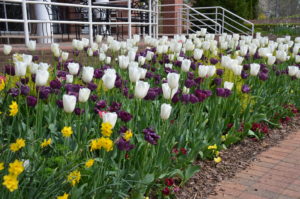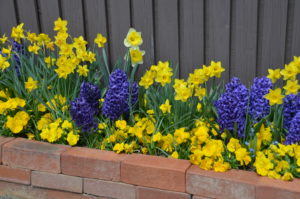Once your tulips, daffodils and other spring flowering bulbs have bloomed, don’t be in a hurry to cut off the stems and leaves. Plant foliage serves an valuable role in the health and growth of bulbous plants. The green leaves absorb sunlight and carbon dioxide as a part of the process of photosynthesis.
The spent blossoms are no longer needed and should be removed as soon as the flowers fade. Leaving the old flowers may encourage seed formation which further exhausts the food supply in the bulbs. Unless you are interested in growing daffodils or tulips from seed, the old blooms should be pruned off. Bulb growth, including the formation of new bublets is promoted.
It is not unusual to see garden workers at large public and private gardens pulling up bulbs right after they have bloomed. Several hours later, they may be planting annuals and perennials for spring – summer garden displays. In this instance the bulbs are considered annuals and are dug up and discard. These bulbs are mostly depleted of food material and most will not re-bloom next year without new carbohydrates being produced. In fall, garden staff will plant new bulbs.
Most home gardeners want their bulbs to perennialize, e.g. come back every spring. For small gardens the following suggestions should help minimize the impact of spent foliage in your garden. About a month after the flowers have faded, the leaves will turn yellow. At this time cutback the all stems and leaves about an inch above the ground. If there is space, at least 3-4 inches between the bulbous stems, plant bedding plants between. For this purpose, I attach an augur bit to my power drill to set summer annuals. Add a layer of an organic mulch to the bed and you’re ready for a summer of dazzling color. Feed bulbs and new annuals in spring and summer. Your bulbs will be back again next spring.
Another idea is to interplant spring blooming bulbs with winter hardy pansies, wallflowers, diascias, dianthus, et.al. in the fall. Bulbs and pansies will offer a full bed of color. Once the pansies have finished flowering in the heat of late spring, you may fill the void with summer annuals



 Posted in
Posted in 
